Gadiformes and Zeiformes are two orders of fish that inhabit the Adriatic Sea and belong to the same Paracanthopterygii superorder.
Gadiformes are sea fish. Burbot (Lota lota) is the only exception. It inhabits freshwater bodies adjacent to the Adriatic as well.
Many commercially important fishes (of the Gadidae family mainly) belong to Gadiformes. In the Adriatic Sea, European hake (Merluccius merluccius) is the most commercially important fish of the Gadidae family.
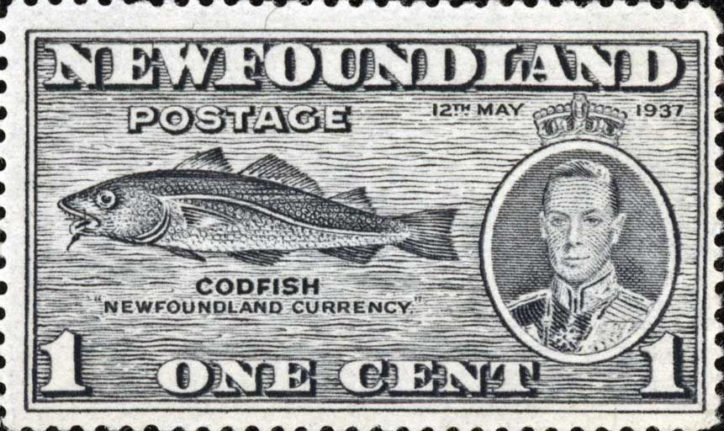
(Newfoundland stamp. Codfish (1937). 1¢.)
Most species of the Gadiformes order are found in the temperate waters of the northern hemisphere; they are very fecund, laying several million eggs during spawning. This contributes to their abundance, which, in turn, makes the commercial catching of these fish species successful.
Almost all species have barbels on their chins, which are used to search for food at the bottom.
Zeiformes are a small order that includes a little more than 30 species. A flat, tall body is their peculiar feature. Only one representative of the Zeiformes family, that is John Dori, which is a rather significant target of not only recreational fishing in the Adriatic, inhabits the Adriatic Sea.
Silvery pout (Gadiculus argenteus).

(Silvery pout. Photo © jypichthyology.info)
It inhabits the depths of 100-1,000 meters. The maximum recorded length is 15 cm; specimens up to 10 cm long are more common. It prefers to gather in large schools near the muddy, muddy-sandy, gravel and rocky bottom. It feeds on small crustaceans and worms. It is a permanent inhabitant of the Adriatic Sea, more often found in its southern part.
Whiting (Merlangius merlangus).

(Whiting. Photo by © Hans Hillewaert. flickr.com/photos/bathyporeia)
It inhabits the depths of 10-200 meters, usually 30-100 meters. It swims near the muddy or pebble bottom, less often near the sandy or rocky bottom. The maximum recorded length is 70 cm; specimens up to 25 cm long are more common. The maximum weight is 3.1 kilograms. It feeds on shrimps, crabs, cephalopods and gastropods, fish. It is the inhabitant of the northern part of the Adriatic Sea.
Blue whiting (Micromesistius poutassou).
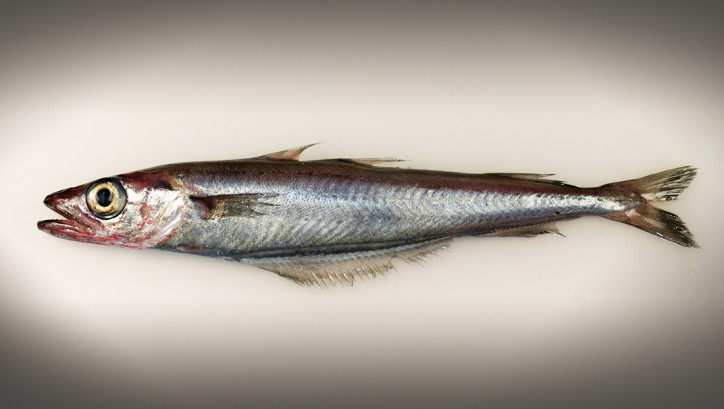
(Blue whiting. Photo © Havforskningsinstituttet, imr.no)
It inhabits the depths of 150-3,000 meters, usually 300-400 meters. It is a bathypelagic species. The maximum recorded length is 50 cm; specimens up to 22 cm long are more common. The maximum weight is 830 grams. In the daytime, it swims in deep areas, and migrates to the surface at night. It feeds on crustaceans, small-sized fish and cephalopods. It is the inhabitant of the southern and central part of the Adriatic Sea.
European hake (Merluccius merluccius).
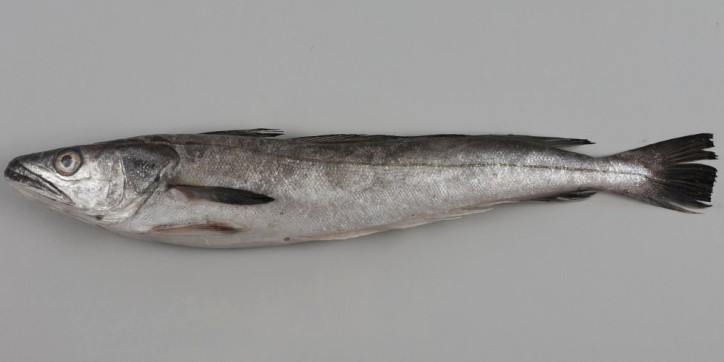
(European hake. Photo © Ichthyology Database of the Swedish Museum of Natural History. artedi.nrm.se)
It inhabits the depths of 30-1,075 meters, usually 70-400 meters. During the day, it swims near the bottom, and can swim closer to the surface at night. The maximum recorded length is 140 cm; specimens up to 45 cm long are more common. The maximum weight is 15 kilograms. It feeds on fish, squids and crustaceans. It is a permanent inhabitant of the Adriatic Sea.
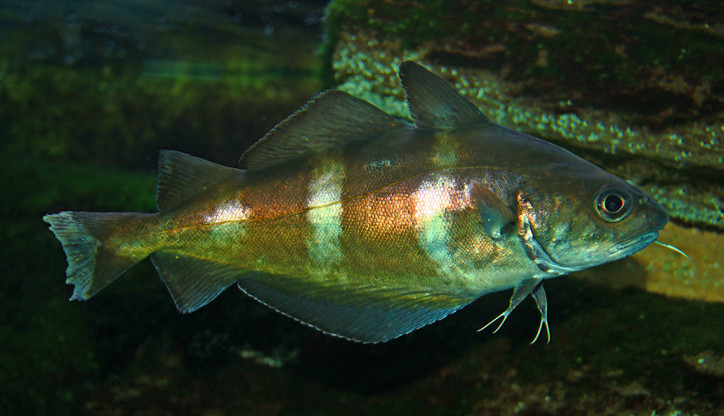
(Pouting. Photo by © H. Zell. zipcodezoo.com)
It inhabits the depths of 30-100 meters. The maximum recorded length is 46 cm; specimens 30 cm long are more common. It feeds on bottom crustaceans, small-sized fish and mollusks. It is a schooling fish. Allegedly, in the Adriatic Sea, this fish occurred near the border with the Ionian Sea.
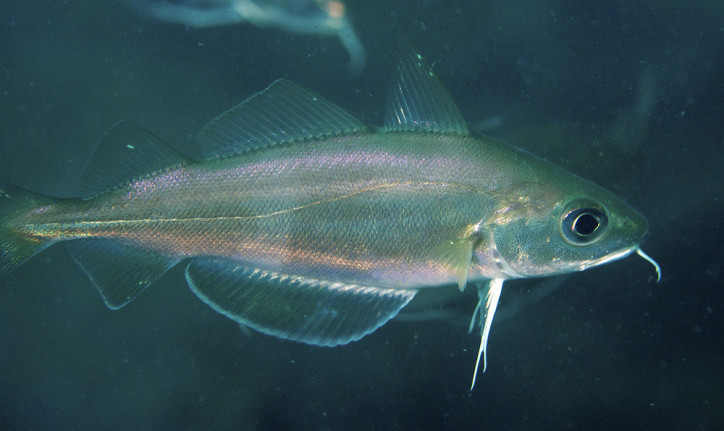
(Trisopterus capelanus. Photo by © Fran Çois. flickr.com/photos/83177560@N05)
It inhabits the depths of up to 300 meters. It swims near the muddy or sandy bottom. It is about 30 cm long. It feeds on crustaceans and small-sized fish. It is a permanent inhabitant of the Adriatic Sea, more often found in its central part.
Mediterranean bigeye rockling (Gaidropsarus biscayensis).
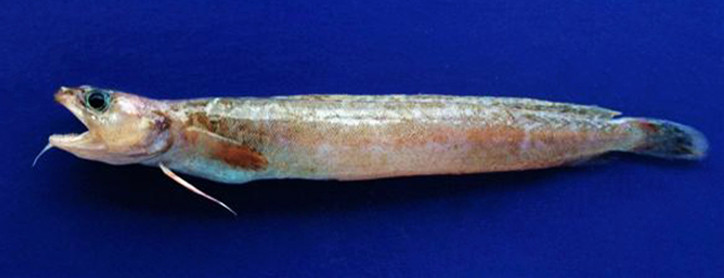
(Mediterranean bigeye rockling. Photo by © Mariano García Rodriguez. fishbase.org)
It inhabits the depths of 80-600 meters. The maximum recorded length is 40 cm; specimens about 12 cm long are more common. It swims near the muddy bottom and bottom with coquina and coral. It feeds on crustaceans. It is found in the southern part of the Adriatic Sea. It is a rare species.
Azores rockling (Gaidropsarus granti).
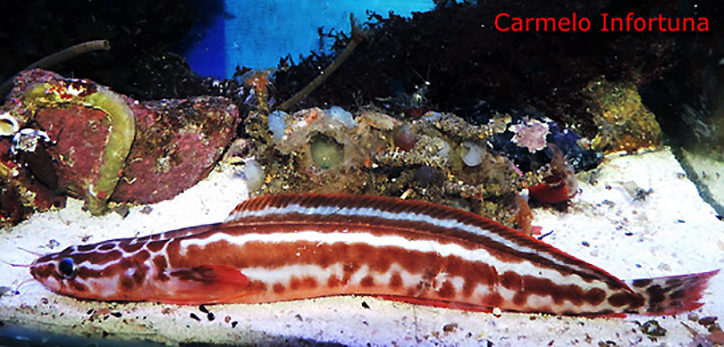
(Azores rockling. Photo by © Carmelo Infortuno. colapisci.it)
It inhabits the depths of 20-250 meters. The maximum recorded length is 36 cm. It feeds on crustaceans. Allegedly, it occurred in the southern part of the Adriatic Sea. It is a rare species.
Shore rockling (Gaidropsarus mediterraneus).

(Shore rockling. Photo © ispotnature.org)
It inhabits the depths of 1-450 meters. Usually, it swims at shallow depths up to 60 meters close in shore, near the rocky bottom with aquatic vegetation. The maximum recorded length is 50 cm. It feeds on fish, crustaceans, worms and algae. It is a permanent infrequent inhabitant of the Adriatic Sea.
Three-bearded rockling (Gaidropsarus vulgaris).

(Three-bearded rockling. Photo by Henk Heessen. marinespecies.org)
It inhabits the depths of 20-120 meters. It swims near the rocky bottom. It occurs near the muddy, sandy and pebble bottom as well. The maximum recorded length is 60 cm; specimens up to 25 cm long are more common. It feeds on shrimps, crabs, small-sized fish and mollusks. It is a permanent rare inhabitant of the Adriatic Sea.

(Burbot. Photo © Lubomir Hlasek. hlasek.com)
It inhabits rivers, lakes, water reservoirs, gulfs with low salt content. The maximum recorded length is 152 cm; specimens up to 40 cm long are more common. The maximum weight is 34 kilograms. It feeds on crustaceans, mollusks, fish. It is the inhabitant of the Po basin (Italy), tributaries of the Danube River in Bosnia and Herzegovina, Slovenia and Croatia, Lake Bohinj and Lake Cerknica (Slovenia) and Lake Plav (Montenegro).
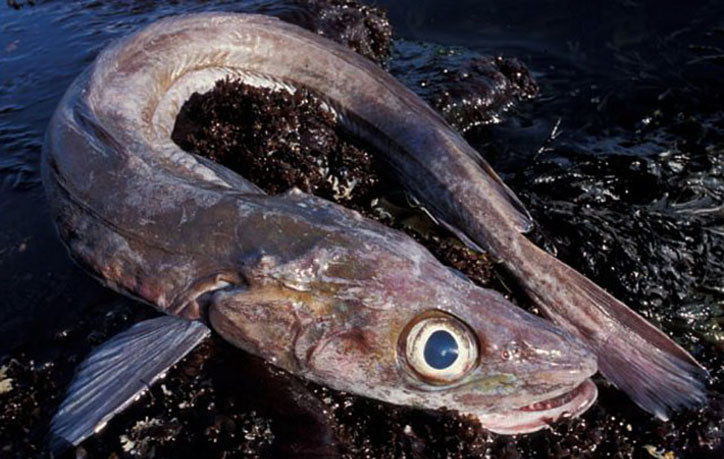
(Blue ling. Photo by © Anders Salesjö. fishbase.org)
It inhabits the depths of 150-1,000 meters, usually 350-500 meters. It swims near the muddy bottom. The maximum recorded length is 155 cm. The maximum weight is 30 kilograms. It feeds on crustaceans and fish, mainly on gobies, flounders and burbots. It is a permanent rare inhabitant of the Adriatic Sea.
Greater forkbeard (Phycis blennoides).

(Greater forkbeard. Photo by © Pedro Niny Duarte(c)ImagDOP. fishbase.org)
It inhabits the depths of 10-1,047 meters, usually 100-450 meters. It swims near the sandy and muddy bottom. It feeds on crustaceans and fish. The maximum recorded length is 110 cm. The maximum weight is 3.5 kg. It is a permanent, but rather rare inhabitant of the Adriatic Sea, more often found in its southern part.

(Forkbeard. Photo © ronjenjehrvatska.com)
It inhabits the depths of 13-614 meters, usually 100-200 meters. It often swims near the rocky and sandy-muddy bottom, close to the rocks. It is active at night. It hides in the rocks in daytime. The maximum recorded length is 65 cm; specimens up to 25 cm long are more common. The maximum weight is 3.9 kg. It feeds on small-sized fish and various invertebrates. It is a permanent inhabitant of the Adriatic Sea.
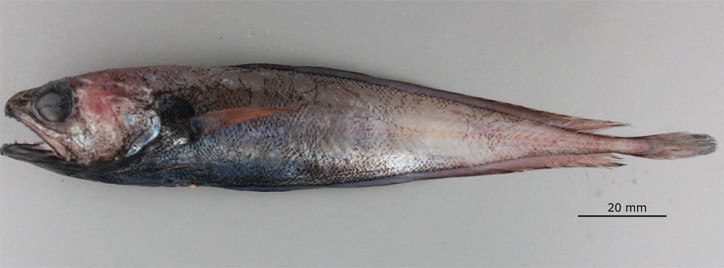
(Gadella. Photo © Northernmost Records Of Gadella Maraldi. ingentaconnect.com)
It inhabits the depths of 150-748 meters. It swims near the hard bottom. The maximum recorded length is 30 cm. There are single occurrences in the southern part of the Adriatic Sea. It is a poorly studied species.
Mediterranean codling (Lepidion lepidion).

(Mediterranean codling. Picture by © fishbase.org)
It inhabits the depths of 500-2,230 meters. The maximum recorded length is 34 cm. It is a bottom-feeder. There are single occurrences in the southern part of the Adriatic Sea. It is a poorly studied species.

(Common mora. Photo © OCEANA. flickr.com/photos/oceanaeurope)
It inhabits the depths of 50-2,500 meters. The maximum recorded length is 80 cm; specimens up to 45 cm long are more common. It feeds on fish, crustaceans, mollusks and other invertebrates. It is a permanent inhabitant of the Adriatic Sea, more often found in its southern part.
Hollowsnout grenadier (Coelorhynchus coelorhynchus).
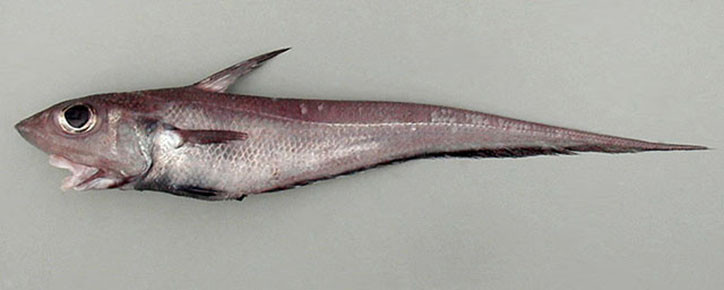
(Hollowsnout grenadier. Photo by © Pedro Niny Duarte(c)ImagDOP. fishbase.org)
It inhabits the depths of 90-1,250 meters, usually 200-500 meters. The maximum recorded length is 48 cm; specimens up to 30 cm long are more common. It feeds on gastropods and cephalopods, crustaceans and fish. It is a permanent rare inhabitant of the Adriatic Sea, more often found in its southern part.
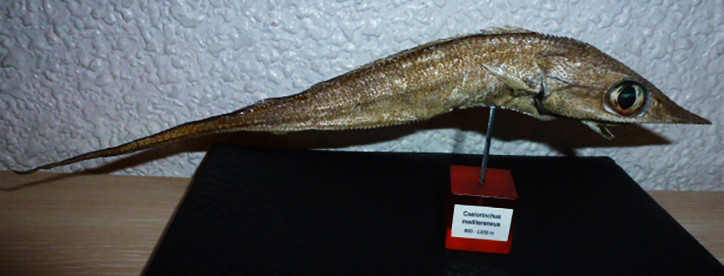
(Coelorinchus mediterraneus. Photo by © Fran Martín de la Sierra. flickr.com/photos/fran_martin)
It inhabits the depths of 800-1,200 meters. The maximum recorded length is 24.5 cm. It is the inhabitant of the southern part of the Adriatic Sea. It is a rare, poorly studied species.
Glasshead grenadier (Hymenocephalus italicus).

(Glasshead grenadier. Photo by © Mariano García Rodríguez. fishbase.org)
It inhabits the depths of 100-1,400 meters. The maximum recorded length is 25 cm. It feeds on crustaceans and small-sized fish. It is a permanent inhabitant of the southern part of the Adriatic Sea. It is a rare, poorly studied species.
Common Atlantic grenadier (Nezumia aequalis).
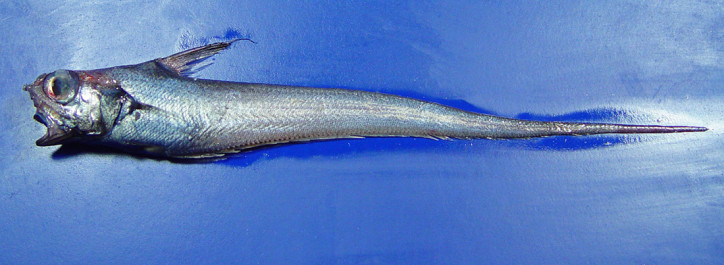
(Common Atlantic grenadier. Photo by © Brandi Noble. NOAA\NMFS\Mississippi Laboratory. fishbase.org)
It inhabits the depths of 200-2,320 meters, usually 200-1,000 meters. The maximum recorded length is 36 cm; specimens up to 25 cm long are more common. It feeds on shrimps and crustaceans. Allegedly, in the Adriatic Sea, it occurs in its southern part. It is a poorly studied species.
Roughtip grenadier (Nezumia sclerorhynchus).

(Roughtip grenadier. Photo by © Alexei Orlov. fishbase.org)
It inhabits the depths of 130-3,200 meters, usually 450-730 meters. The maximum recorded length is 36 cm. It feeds on small crustaceans and polychaete. Allegedly, in the Adriatic Sea, it occurs in its southern part. It is a poorly studied species.
Roughsnout grenadier (Trachyrincus scabrus).

(Roughsnout grenadier. Photo by © Luis Peña. ictioterm.es)
It inhabits the depths of 395-1,700 meters. The maximum recorded length is 60 cm. It feeds on crustaceans, shrimps, cephalopods and gastropods, fish. Allegedly, in the Adriatic Sea, it occurs in its southern part. It is a poorly studied species.
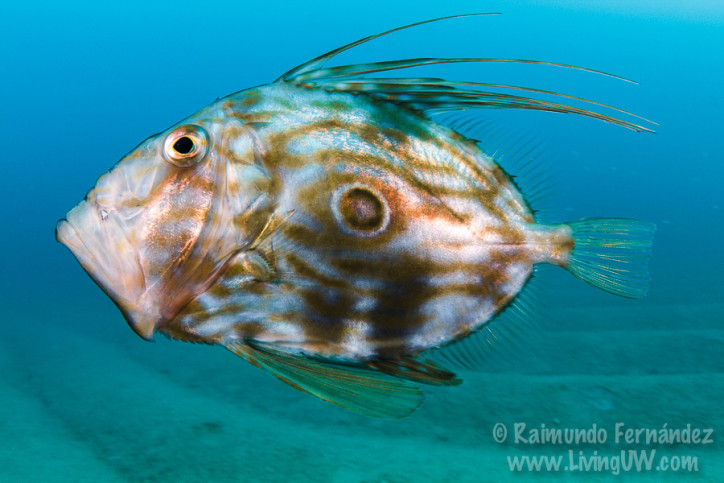
(John dory. Photo by © Raimundo Fernandez. flickr.com/photos/rferdiez)
It inhabits the depths of 5-400 meters, usually 50-150 meters. It swims near the bottom. It is a single predator. The maximum recorded length is 90 cm; specimens up to 40 cm long are more common. The maximum weight is 8 kilograms. It feeds on small schooling fish, cephalopods and crustaceans. It is a permanent inhabitant of the Adriatic Sea.